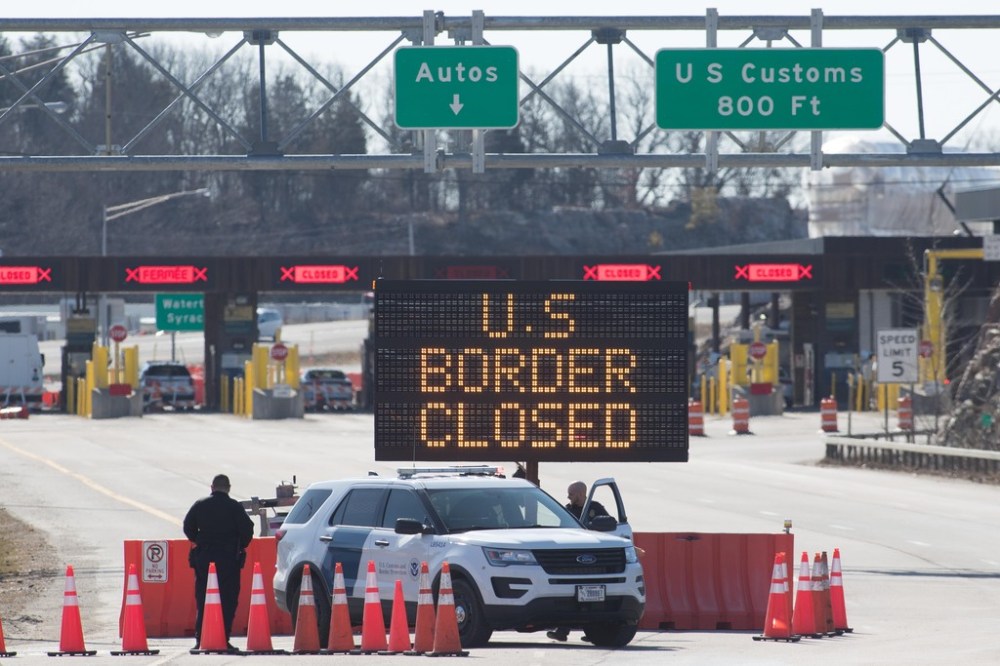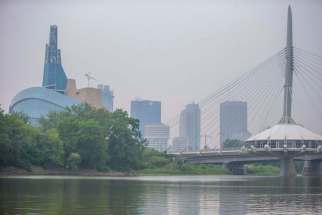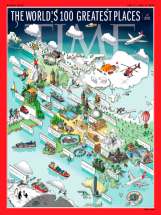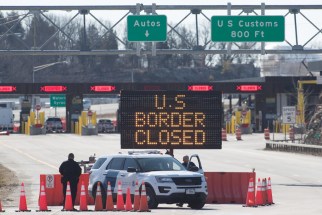U.S. border reopening a prudent next step
Read this article for free:
or
Already have an account? Log in here »
To continue reading, please subscribe:
Monthly Digital Subscription
$0 for the first 4 weeks*
- Enjoy unlimited reading on winnipegfreepress.com
- Read the E-Edition, our digital replica newspaper
- Access News Break, our award-winning app
- Play interactive puzzles
*No charge for 4 weeks then price increases to the regular rate of $19.00 plus GST every four weeks. Offer available to new and qualified returning subscribers only. Cancel any time.
Monthly Digital Subscription
$4.75/week*
- Enjoy unlimited reading on winnipegfreepress.com
- Read the E-Edition, our digital replica newspaper
- Access News Break, our award-winning app
- Play interactive puzzles
*Billed as $19 plus GST every four weeks. Cancel any time.
To continue reading, please subscribe:
Add Free Press access to your Brandon Sun subscription for only an additional
$1 for the first 4 weeks*
*Your next subscription payment will increase by $1.00 and you will be charged $16.99 plus GST for four weeks. After four weeks, your payment will increase to $23.99 plus GST every four weeks.
Read unlimited articles for free today:
or
Already have an account? Log in here »
Hey there, time traveller!
This article was published 20/07/2021 (1605 days ago), so information in it may no longer be current.
The political boundary between Canada and the United States is often celebrated as the world’s longest undefended border. But unprecedented edicts were imposed on both sides of the border in March 2020 to defend against the menacing invader known as COVID-19.
Sixteen months later, on Aug. 9, the border will be substantially reopened to leisure travellers, at least on Canada’s side.
The federal government’s announcement Monday that Canada will welcome American citizens for non-essential travel will be cheered by this country’s tourism industry. According to the industry publication Destination Canada, national tourism businesses are facing a financial crisis greater than the combined impacts of Sept. 11, 2001, the SARS outbreak and the global financial crisis.
Some Canadians are already expressing concern that allowing American travellers into Canada is reckless, especially in places such as Manitoba, where restrictions on indoor and outdoor gatherings are still in place.

Encouragingly, however, the Canadian plan includes requirements that appear measured and cautious. U.S. travellers must present a negative COVID-19 test completed before arrival and also show proof they’ve had two doses of vaccine. Some will also be subjected to random molecular testing upon arrival.
The 14-day quarantine requirement will be waived, but all travellers still must have a quarantine plan in case a border official finds they do not meet the necessary requirements.
Allowing American travellers under such rigorous medical restrictions is a prudent way for Canada to test its border controls before it opens the border wider to visitors from other countries, which will tentatively happen on Sept. 7.
The border-opening plans announced Monday also spell good news for Winnipeg’s James Armstrong Richardson International Airport. Only four Canadian airports — Toronto, Montreal, Calgary and Vancouver — are currently allowed to receive international flights. But beginning Aug. 9, the Winnipeg airport is among five smaller-city Canadian airports that will also be allowed to again service international arrivals.
The resumption of international flights can’t come soon enough for the Winnipeg airport, which is suffering its worst financial period ever due to border closures and pandemic restrictions. The airport’s ledger for 2020 shows a net loss of $40.3 million, compared to a net income of $3.5 million in 2019.
An appropriate next step in border relations would be for the U.S. to respond by loosening rules for Canadians who want to cross the border in the southbound direction. It would seem safe enough. After all, per capita, more Canadians than Americans are now fully immunized. While the U.S. population was ahead earlier in the race to get double vaccinated, Canada recently caught up. As of July 16, 48.45 per cent of Canadians are fully vaccinated against COVID-19, compared with 48.05 per cent of Americans.
In normal times, Manitobans enjoy easy access to neighbouring American states for such leisure activities as weekend getaways to Grand Forks, N.D., and NFL Viking games in Minnesota. But, so far, the U.S. has not indicated when it will loosen its rules for land travel.

U.S. President Joe Biden has recently been pressured to ease international travel restrictions into his country, but his administration’s reluctance to open up seems based on concerns about resurgences of the virus, particularly the delta variant, in some under-vaxxed areas of the U.S., and also on public concern about opening the U.S.-Mexico border.
Canada took the first step by announcing it will soon welcome American visitors. It makes sense for a reciprocal invitation to soon be extended by our friendly neighbour to the south.





